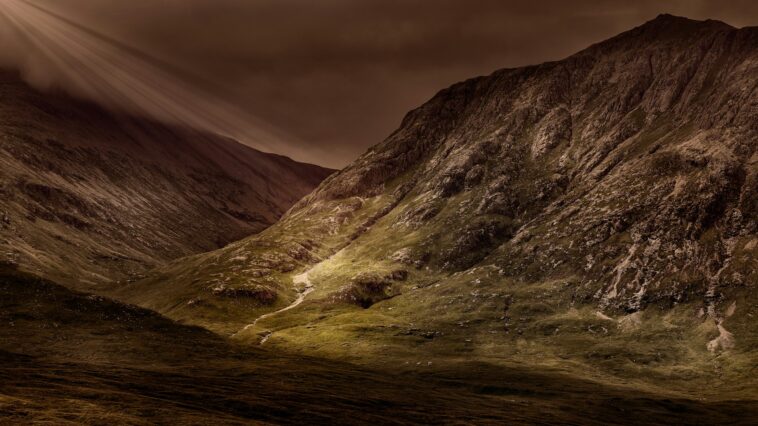What Makes the Tsum Valley Trek a Hidden Gem?
Nestled in the remote northern region of the Gorkha district, the Tsum Valley Trek offers one of Nepal’s most culturally rich and spiritually deep journeys. Far less frequented than Everest or Annapurna, this trek takes you into a secluded Tibetan-influenced valley that remained closed to outsiders until 2008. This isolation preserved centuries-old traditions, monasteries, and lifestyles that feel untouched by time.
The name “Tsum” is derived from the Tibetan word Tsombo, meaning vivid. And vivid it is—with dramatic landscapes, lush forests, sacred mountains, and monasteries that breathe with prayer and ritual. This Tsum Valley Trek guide is for anyone seeking peace, culture, and a truly off-the-beaten-path experience.
Where Does the Tsum Valley Trek Begin and End?
The journey begins with a drive from Kathmandu to Machha Khola, passing through Arughat or Sotikhola depending on road conditions. From there, the trek heads northward, gradually ascending along the Budhi Gandaki River. Unlike other treks that climb quickly, the Tsum Valley route eases into elevation, which helps with acclimatization.
You pass through tropical lowlands, pine forests, and deep gorges before reaching the culturally Tibetan-influenced villages of Chhokang Paro, Nile, and Mu Gompa. These high-altitude settlements, located at around 3,700 meters, offer a glimpse into the spiritual soul of the valley.
The trek typically takes 15 to 18 days, depending on your pace and side trips, and is often combined with the Manaslu Circuit for a more extended adventure.
What Are the Cultural Highlights?
Culture is at the heart of the Tsum Valley Trek. This region is considered a sacred Himalayan pilgrimage site known as “The Hidden Valley of Happiness.” It’s dotted with ancient monasteries, mani walls, and chortens.
Key cultural stops include:
Mu Gompa: The largest monastery in the valley, offering dramatic views and peaceful surroundings.
Rachen Gompa: A nunnery that welcomes trekkers and shares its tranquil space with guests.
Milarepa’s Cave: Believed to be a meditation site of the revered Tibetan saint Milarepa.
The people of Tsum Valley follow Tibetan Buddhism, and their language, dress, and customs are all influenced by their Tibetan heritage. Trekkers often describe the encounters with locals as deeply humbling—hospitality is sincere, and smiles are generous.
Is the Tsum Valley Trek Difficult?
The trek is considered moderate in difficulty. While it doesn’t reach the high altitudes of Everest Base Camp or the Annapurna Circuit, it still demands good physical fitness due to long walking days, rugged trails, and remote conditions.
The highest point is typically Mu Gompa at 3,700 meters, so altitude sickness risk is lower than on other high Himalayan treks. However, proper acclimatization and hydration remain important. The trail doesn’t have technical climbing but does involve steep ascents and river crossings.
When Is the Best Time to Go?
The ideal seasons for the Tsum Valley Trek are:
Spring (March to May): Flowers bloom, skies are clear, and temperatures are pleasant.
Autumn (September to November): Stable weather, clear mountain views, and vibrant cultural festivals.
Trekking in winter is possible for experienced adventurers but expect colder temperatures and limited teahouse services. Monsoon season (June to August) is not recommended due to slippery trails and leeches.
What Should You Pack for the Tsum Valley?
Since the trek moves from subtropical forests to alpine terrain, you need gear for a range of conditions. Essentials include:
Warm layers (down jacket, fleece, thermals)
Good trekking boots
Sleeping bag (especially in colder months)
Reusable water bottle and purification tablets
Sunscreen, hat, sunglasses
Basic first-aid kit and any personal medications
Local teahouses provide simple meals and accommodation, but the remote location means options are limited. Packing snacks and essentials is advisable.
Why Choose the Tsum Valley Trek?
If you’re searching for a trekking route that goes beyond just mountains and offers a blend of spirituality, culture, and solitude, this is it. The Tsum Valley feels like a living museum—its people, monasteries, and trails offer more than just scenery—they offer stories.
Unlike busier routes, here you walk in near silence, with only the sound of your boots, prayer wheels, and occasional yak bells. The scenery is dramatic but less commercialized, giving you a rare look at the raw and spiritual side of the Himalayas.
Final Thoughts
This Tsum Valley Trek Guide is your call to go deeper. Beyond the altitudes and panoramas, this journey is about connecting—with yourself, with locals, and with a way of life that’s steadily vanishing from the modern world. If you’re drawn to the sacred and the scenic, there may be no better path to walk in Nepal than this one.
This post was created with our nice and easy submission form. Create your post!



